Multiple organizations are working toward the same ends. How can we ensure critical information doesn’t fall through the cracks?
In our January blog, we looked at two organizations that are modeling collaboration in the fight against childhood cancer — but there are dozens of institutions and multiple database consortia involved in researching cures and treatments for these deadly diseases. What obstacles exist that complicate sharing that information, and how can we dismantle those barriers?
Currently there are several childhood cancer consortia collecting data. Top institutions may participate in one or more of these, but data sharing among the consortia is limited and complex. The exception is the Children’s Brain Tumor Network (CBTN) highlighted in our blog, “Modeling Collaboration to Beat Childhood Cancer.” We also commended the collaborative work of the Pediatric Cancer Data Commons. PCDC is not a database and owns no data, but is working to universalize lexicons for cancer so that when data is entered wherever it ends up, the language is consistent and clearly understood.
In addition to CBTN, other organizations collecting data on childhood cancer include the Pediatric Brain Tumor Consortium (PBTC) and Pacific Pediatric Neuro-Oncology Consortium (PNOC). These groups also include key players in the National Cancer Institute’s Childhood Cancer Data Initiative (CCDI), which is working to create universal access to the information that can drive more effective treatments and cures.
As part of our focus on increasing collaboration to save children’s lives, we are approaching these organizations to ask what barriers prevent them from sharing data. These include technological and institutional obstacles that need to be overcome if we are going to realize our vision of creating a truly robust database that contains everything we know about fighting childhood cancer.
For instance, an institution may belong to one or more consortia. They have access to the same dataset, but researchers may be working on different datasets and results that are not shared with the broader childhood cancer research community. If all the research findings for one set of data are not in the same place, there could be a link to cures that no one knows about.
What will it take to find these blind spots? We don’t have the answers yet because we are just starting to explore the gaps and obstacles preventing full collaboration. This is our focus in the first part of 2021.
Technological issues may be solved with technological fixes. For instance, the technology CCDI is developing is not a standard database in which information must be entered in a specific, uniform way. It is more of a blockchain approach where data is in the cloud and technology will allow researchers to access it for analysis. This approach may solve many of the problems inherent in existing siloed databases.
There are 40 institutions signed up with one of the major databases, and 18 of those are involved with more than one. Our challenge is to ensure that all organizations are able to input and access data. To do that we need to discover the technological and institutional/cultural barriers. To break down those barriers, we must recognize that there are real consequences of not collaborating.
There may be data out there today that will help us optimize a current treatment or discover a new cure. It could be sitting in two different databases while no one sees the connection and, as a result, kids are dying. In the high-tech world of pediatric cancer research, keeping that in mind can fuel the willpower we need to overcome institutional and technological barriers, and finally find cures to the diseases that steal young lives.






